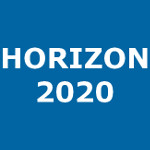Fabrication of human myocardium using multidimensional modelling of engineered tissues
Montero-Calle, Pilar ; Flandes-Iparraguirre, María ; Mountris, Konstantinos ; S de la Nava, Ana ; Laita, Nicolás (Universidad de Zaragoza) ; Rosales, Ricardo M ; Iglesias-García, Olalla ; de-Juan-Pardo, Elena M ; Atienza, Felipe ; Fernández-Santos, María Eugenia ; Peña, Estefanía (Universidad de Zaragoza) ; Doblaré, Manuel (Universidad de Zaragoza) ; Gavira, Juan J ; Fernández-Avilés, Francisco ; Prósper, Felipe ; Pueyo, Esther (Universidad de Zaragoza) ; Mazo, Manuel M
Resumen: Biofabrication of human tissues has seen a meteoric growth triggered by recent technical advancements such as human induced pluripotent stem cells (hiPSCs) and additive manufacturing. However, generation of cardiac tissue is still hampered by lack of adequate mechanical properties and crucially by the often unpredictable post-fabrication evolution of biological components. In this study we employ melt electrowriting (MEW) and hiPSC-derived cardiac cells to generate fibre-reinforced human cardiac minitissues. These are thoroughly characterized in order to build computational models and simulations able to predict their post-fabrication evolution. Our results show that MEW-based human minitissues display advanced maturation 28 post-generation, with a significant increase in the expression of cardiac genes such as MYL2, GJA5, SCN5A and the MYH7/MYH6 and MYL2/MYL7 ratios. Human iPSC-cardiomyocytes are significantly more aligned within the MEW-based 3D tissues, as compared to conventional 2D controls, and also display greater expression of C ×43. These are also correlated with a more mature functionality in the form of faster conduction velocity. We used these data to develop simulations capable of accurately reproducing the experimental performance. In-depth gauging of the structural disposition (cellular alignment) and intercellular connectivity (C ×43) allowed us to develop an improved computational model able to predict the relationship between cardiac cell alignment and functional performance. This study lays down the path for advancing in the development of in silico tools to predict cardiac biofabricated tissue evolution after generation, and maps the route towards more accurate and biomimetic tissue manufacture.
Idioma: Alemán
DOI: 10.1088/1758-5090/ac8cb3
Año: 2022
Publicado en: BIOFABRICATION 14, 4 (2022), 045017 [17 pp]
ISSN: 1758-5082
Factor impacto JCR: 9.0 (2022)
Categ. JCR: MATERIALS SCIENCE, BIOMATERIALS rank: 6 / 45 = 0.133 (2022) - Q1 - T1
Categ. JCR: ENGINEERING, BIOMEDICAL rank: 11 / 96 = 0.115 (2022) - Q1 - T1
Factor impacto CITESCORE: 17.0 - Engineering (Q1) - Materials Science (Q1) - Chemical Engineering (Q1) - Medicine (Q1) - Biochemistry, Genetics and Molecular Biology (Q1)
Factor impacto SCIMAGO: 1.534 - Biochemistry (Q1) - Bioengineering (Q1) - Medicine (miscellaneous) (Q1) - Biomedical Engineering (Q1) - Biotechnology (Q1) - Biomaterials (Q1)
Financiación: info:eu-repo/grantAgreement/ES/DGA-FSE/T39-20R
Financiación: info:eu-repo/grantAgreement/ES/DGA/LMP94_21
Financiación: info:eu-repo/grantAgreement/EC/H2020/874827/EU/Computational biomechanics and bioengineering 3D printing to develop a personalized regenerative biological ventricular assist device to provide lasting functional support to damaged hearts/BRAV3
Financiación: info:eu-repo/grantAgreement/ES/ISCIII/FEDER/CB16-11-00292
Financiación: info:eu-repo/grantAgreement/ES/ISCIII/FEDER/RD16-0011-0005
Financiación: info:eu-repo/grantAgreement/ES/ISCIII/PI19-01350
Financiación: info:eu-repo/grantAgreement/ES/ISCIII-RICORDS/RD21-0017-002
Financiación: info:eu-repo/grantAgreement/ES/MICINN/PID2019-105674RB-I00
Financiación: info:eu-repo/grantAgreement/ES/MINECO-FEDER/ISCIII-CB16-12-00489
Tipo y forma: Artículo (Versión definitiva)
Área (Departamento): Área Teoría Señal y Comunicac. (Dpto. Ingeniería Electrón.Com.)
Área (Departamento): Área Mec.Med.Cont. y Teor.Est. (Dpto. Ingeniería Mecánica)
 Debe reconocer adecuadamente la autoría, proporcionar un enlace a la licencia e indicar si se han realizado cambios. Puede hacerlo de cualquier manera razonable, pero no de una manera que sugiera que tiene el apoyo del licenciador o lo recibe por el uso que hace.
Debe reconocer adecuadamente la autoría, proporcionar un enlace a la licencia e indicar si se han realizado cambios. Puede hacerlo de cualquier manera razonable, pero no de una manera que sugiera que tiene el apoyo del licenciador o lo recibe por el uso que hace.
Exportado de SIDERAL (2024-03-18-16:47:13)
Visitas y descargas
Idioma: Alemán
DOI: 10.1088/1758-5090/ac8cb3
Año: 2022
Publicado en: BIOFABRICATION 14, 4 (2022), 045017 [17 pp]
ISSN: 1758-5082
Factor impacto JCR: 9.0 (2022)
Categ. JCR: MATERIALS SCIENCE, BIOMATERIALS rank: 6 / 45 = 0.133 (2022) - Q1 - T1
Categ. JCR: ENGINEERING, BIOMEDICAL rank: 11 / 96 = 0.115 (2022) - Q1 - T1
Factor impacto CITESCORE: 17.0 - Engineering (Q1) - Materials Science (Q1) - Chemical Engineering (Q1) - Medicine (Q1) - Biochemistry, Genetics and Molecular Biology (Q1)
Factor impacto SCIMAGO: 1.534 - Biochemistry (Q1) - Bioengineering (Q1) - Medicine (miscellaneous) (Q1) - Biomedical Engineering (Q1) - Biotechnology (Q1) - Biomaterials (Q1)
Financiación: info:eu-repo/grantAgreement/ES/DGA-FSE/T39-20R
Financiación: info:eu-repo/grantAgreement/ES/DGA/LMP94_21
Financiación: info:eu-repo/grantAgreement/EC/H2020/874827/EU/Computational biomechanics and bioengineering 3D printing to develop a personalized regenerative biological ventricular assist device to provide lasting functional support to damaged hearts/BRAV3
Financiación: info:eu-repo/grantAgreement/ES/ISCIII/FEDER/CB16-11-00292
Financiación: info:eu-repo/grantAgreement/ES/ISCIII/FEDER/RD16-0011-0005
Financiación: info:eu-repo/grantAgreement/ES/ISCIII/PI19-01350
Financiación: info:eu-repo/grantAgreement/ES/ISCIII-RICORDS/RD21-0017-002
Financiación: info:eu-repo/grantAgreement/ES/MICINN/PID2019-105674RB-I00
Financiación: info:eu-repo/grantAgreement/ES/MINECO-FEDER/ISCIII-CB16-12-00489
Tipo y forma: Artículo (Versión definitiva)
Área (Departamento): Área Teoría Señal y Comunicac. (Dpto. Ingeniería Electrón.Com.)
Área (Departamento): Área Mec.Med.Cont. y Teor.Est. (Dpto. Ingeniería Mecánica)
Exportado de SIDERAL (2024-03-18-16:47:13)
Enlace permanente:
Visitas y descargas
Este artículo se encuentra en las siguientes colecciones:
Artículos > Artículos por área > Mec. de Medios Contínuos y Teor. de Estructuras
Artículos > Artículos por área > Teoría de la Señal y Comunicaciones
Registro creado el 2022-11-15, última modificación el 2024-03-19
